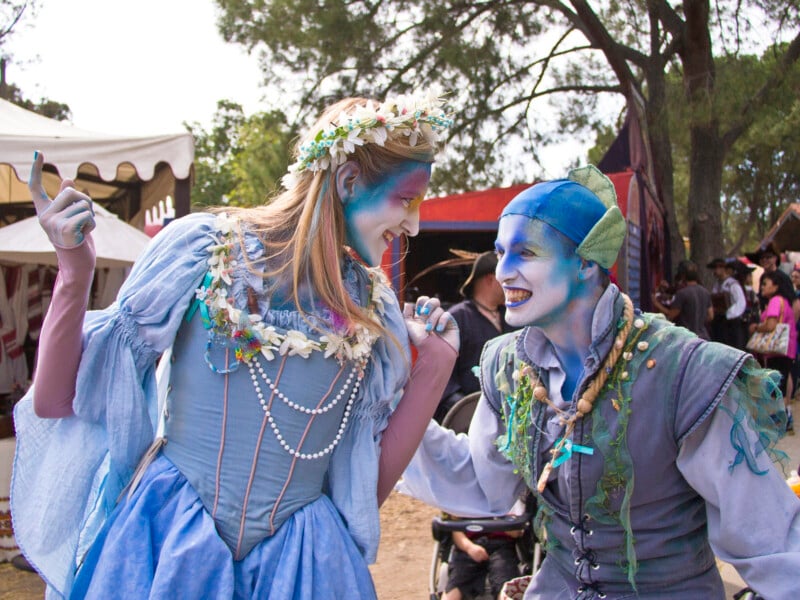![]()
As a photographer, you are taught to see different compositional elements in other people’s work, and you apply the elements that resonate with you to your own work.
You see the rule of thirds, Fibonacci spirals and golden ratios wherever you go. You look for framing opportunities and leading lines to guide the eye and use color and contrast to help establish a focal point.
But this isn’t how non-artists work. They don’t look at a beautiful image and say to themselves “Wow, look at these leading lines pulling my gaze through this image” or “nice use of the Fibonacci spiral.” The non-artist, non-photographer simply absorbs the information you provide and reacts to it, hopefully in a way that you intended.
The Hacker
Our brains “take in” images that are presented to us, and we, the viewers react to them.
In effect, as a photographer, you are a hacker. You are poking the neurons in the viewer’s minds via the rods and cones in their eyes with the intent of eliciting a response.
You are taught to use a variety of different tools to do this hacking. You use leading lines to guide the eye, you use compositional elements to achieve structure, and you use lighting and color to create a mood.
The Toolbox
If you go to your textbooks or the internet and do some searching, you can easily find dozens of different compositional elements. You learn how to compose, to light, and to choose color. You use these tools every day, but have you ever considered the operating system that you are dealing with?
Human vision and neurology are massively complicated subjects, but in that complexity, there is some order. I have broken down human vision into five “layers” of effect, each connected of course, but unique in what and how they create the experience of viewing an image.
Attention Layer
![]()
This is where the nearly instantaneous processing is going on. Your retina is doing initial processing, enhancing important information, doing information compressing, and sending this data off to the brain.
This visual information is broken down at a very primitive level by an area of the brain called the Lateral Geniculate Nucleus (LGN) and then sent to your primary visual cortex(V1). The LGN is like a filter and organizer. It categorizes the information it receives and routes it to the V1 with more organization and structure than just raw data.
Information is also sent off to an area called the Superior Colliculus (SC), a part of your “lizard brain” where things like brightness, contrast, and implied motion can trigger reflexive head and eye motion. This stuff gets your attention.
This all happens very fast; it is wired into your “lizard brain’s” fight or flight response. Don’t think about it, react to it.
To trigger the Attention Layer, use contrast, brightness, and motion to grab your viewer’s attention. Elements like size and scale, sharpness, and color dominance are also useful for getting the viewer’s attention.
Once your brain is done being reflexive, the next step in the processing of information is to hand over the controls to you, the conscious viewer making the decisions. This handoff of control takes place in the Frontal Eye Fields (FEF) with the help of the Pulvinar Nucleus (PN) which helps you prioritize visual information.
When you want to stimulate the Attention Layer:
Do
- Use high contrast (e.g., light vs. dark) or vibrant colors to make subjects pop.
- Create a strong focal point by using shallow depth of field or isolating the subject from a cluttered background.
- Place bright elements strategically to naturally draw the viewer’s eye.
Don’t
- Don’t use overly similar tones or colors that blend your subject into the background, making it hard to identify.
- Don’t include distracting elements around the subject that compete for attention, as they dilute the image’s impact.
- Don’t place too many bold elements in different parts of the frame; focus on a single point of emphasis.
Organization Layer
![]()
Now more advanced brain functions kick in.
The information goes from V1 to your Secondary Visual Cortex (V2) and to the Dorsal Stream which leads to your Parietal Lobe.
The Dorsal Stream acts on spatial relationships and motion. Here your typical compositional elements like the rule of thirds, golden ratio, and diagonals start to trigger your brain. If there is a spatial relationship, this is where it is getting processed. Depth cues are also being processed here, things like size and perspective. This helps you understand the scene in 3D space.
Simultaneously, your Secondary Visual Cortex (V2) is starting to pull out shapes, contours, symmetry, and motion. V2 is also starting to process complex patterns and groupings. This helps organize the scene.
To stimulate the Organization Layer:
Do
- Use leading lines, curves, or framing to guide the viewer’s eye through the composition.
- Apply the Rule of Thirds, Golden Ratio, or other forms of spatial organization to trigger the areas of the brain responsible for spatial content.
- Use symmetry, balance, and depth to create a sense of harmony and visual flow.
Don’t
- Don’t place the main subject dead center unless you are using symmetry intentionally, as it can make the composition feel static.
- Don’t ignore the background and foreground; use layering to add depth and context to the scene.
- Don’t crop or cut off important lines or shapes that could guide the viewer’s gaze through the scene.
Emotion Layer

This is where things start to get really complicated. Like, way more complicated. At this point so many areas of the brain are involved, sending information to multiple destinations, in different directions.
Simply put, as information moves into more complex processes, more areas of the brain get involved, and input from other senses can influence these areas as well, though we’re mainly focusing on visual input here. There are so many areas involved from here on that I won’t list them all, it just gets messy.
In the emotional layer, the brain processes emotional responses like fear, threat, or happiness and triggers fight-or-flight reactions when necessary. It assigns emotional value to visual stimuli based on context, past experiences, and even cultural significance. The brain also links emotions to past events, which helps with emotional learning and memory formation. Bodily sensations, like a racing heartbeat or gut feelings, are integrated into these emotional experiences.
Additionally, the brain perceives and interprets social cues, such as facial expressions and body language, and evaluates whether something feels rewarding or risky. Colors, forms, and lighting in the visual scene also play a role in how the brain interprets the emotional tone of an image.
To poke at people’s emotions:
Do
- Use soft lighting and warm colors for a calm, serene mood or harsh lighting and cool colors for a tense, dramatic atmosphere.
- Incorporate textures that suggest emotions (e.g., rough textures for discomfort, smooth surfaces for tranquility).
- Experiment with color schemes to evoke specific emotions (e.g., reds and yellows for excitement, blues for calm or sadness).
Don’t
- Don’t use conflicting color temperatures (e.g., warm and cool lighting clashing) unless the intent is to create visual tension.
- Don’t use flat or even lighting if the goal is to convey emotion, shadow and light contrast can add drama and mood.
- Don’t overuse strong colors without purpose, as they can overwhelm the viewer and muddle the emotional impact.
Narrative Layer
![]()
This is where the brain starts to piece together the story or context of what we’re seeing. At this stage, more of your consciousness is involved in making sense of the relationships between objects, people, and actions in an image.
The brain takes visual input and connects it to known concepts, building a narrative around what’s happening in the scene. It looks at elements like the positioning of objects or people, their interactions, and implied action to determine the story behind the image. The brain also draws from past experiences, learned behaviors, and even cultural references to understand the relationships and context within the visual scene.
In the narrative layer, the brain processes not just what is in the image, but how the elements interact and what they mean together. This helps create an understanding of the ‘story’ the image is telling—whether it’s a literal action, an implied relationship, or an abstract idea.
When playing with narration:
Do
- Position subjects to suggest relationships or interactions (e.g., people facing each other for dialogue or conflict).
- Use props or settings to provide context and hint at a backstory or future action.
- Include subtle details that encourage the viewer to explore the scene and ask questions.
Don’t
- Don’t ignore the background or supporting elements, as they can distract from or contradict the intended story.
- Don’t leave too much ambiguity in narrative images—clarify the main story elements through composition and subject placement.
- Don’t overcrowd the scene with too many subjects, as it can confuse the viewer and weaken the narrative focus.
Symbolism Layer

The symbolism layer is where the brain delves into deeper meanings, interpreting symbols and abstract concepts within the image. In the symbolism layer, the brain isn’t just looking at what’s in the picture or how things are arranged, it’s interpreting why things are there and what they represent on a conceptual level.
At this stage, the brain pulls from personal experiences, cultural knowledge, and abstract thinking to assign symbolic meaning to objects, colors, and compositions. This layer is where things like metaphor, analogy, and cultural symbolism come into play. For example, a simple object like a tree might symbolize life, growth, or connection to nature, depending on the context.
The brain works by connecting the visual elements to deeper, higher-order meanings, linking them to ideas, concepts, and beliefs. It’s also where personal and emotional connections are made, as certain symbols may evoke different meanings based on individual experiences or cultural backgrounds. By interpreting symbols and metaphors, the brain uncovers layers of meaning that go beyond the immediate visual information.
To bring your images into the symbolic realm:
Do
- Include culturally or universally recognized symbols (e.g., scales for justice, hourglass for time) to add depth to the image.
- Use visual metaphors, such as contrasting elements (e.g., light and dark, young and old) to convey abstract ideas.
- Consider using surreal or unexpected juxtapositions to create a sense of mystery or provoke thought.
Don’t
- Don’t overuse symbolic elements without clear intent, as it can lead to confusion or visual clutter.
- Don’t use obscure or overly personal symbols that might not translate to a wider audience unless targeting a specific group.
- Don’t rely solely on symbols for meaning—combine them with strong narrative or emotional cues for a cohesive message.
By thinking about your photography in this way, not only does the effect of different compositional elements become clearer, but you are also, to some extent, free from having to memorize all of the different compositional tools. You can start working at a different level because now you know the “why” of composition, not just the “how”.

About the author: Mike Keesling is an Academy Award and Emmy-winning inventor with a long history in photography, cinema, and R&D. His inventions, including the “Image Shaker” and “Squishy Lens” have been contributing to television and cinema for over 25 years. He also has patents in the fields of lighting, color night vision, motion control, and sensing. Having semi-retired in 2022, Mike now spends his time pondering deeper mysteries of life, writing software, and making cameras.
